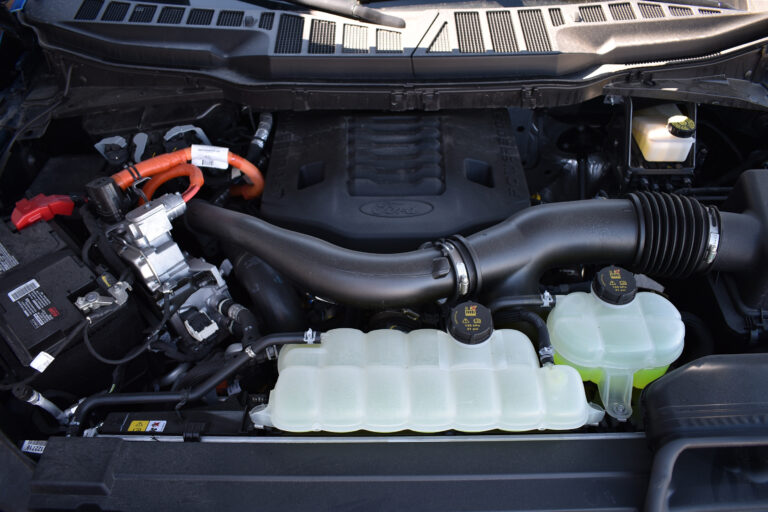In the March issue ETi reported on Ford’s entry into hybrid pickups with the F-150 PowerBoost (see Pulling Power, p12).Since then, the OEM’s efforts to electrify the pickup market have gathered pace with the reveal of the all-electric F-150 Lightning and the new Maverick hybrid, both of which are due on sale as 2022 models.
Having recently spent a week with the 436ps PowerBoost, it would be a pity if the hybrid F-150 got lost in the stampede for the Lightning. For many North American truck buyers, the infrastructure is not yet in place to facilitate the use of an EV full-time. Until that changes the hybrid can offer fuel savings and attractive features like the ProPower Onboard exportable power supply.
 We spent most of our time on short runs in the city, which is not what an F-150 is necessarily built for but tends to be how many are used. Our recorded fuel consumption figure of 13.1L/100km won’t win any environmental awards and is way short of the official number (9.8L/100km), but it’s important to note that ETi have never got close to the published figure with any EcoBoost V6. What’s interesting is that truck data stated that it spent about 27% of its time running on electric. That saving would soon add up in high-mileage use; full-size trucks sell in huge numbers and use a lot of fuel, so even a 20% dent in consumption results in a worthwhile emissions reduction, in our opinion.
We spent most of our time on short runs in the city, which is not what an F-150 is necessarily built for but tends to be how many are used. Our recorded fuel consumption figure of 13.1L/100km won’t win any environmental awards and is way short of the official number (9.8L/100km), but it’s important to note that ETi have never got close to the published figure with any EcoBoost V6. What’s interesting is that truck data stated that it spent about 27% of its time running on electric. That saving would soon add up in high-mileage use; full-size trucks sell in huge numbers and use a lot of fuel, so even a 20% dent in consumption results in a worthwhile emissions reduction, in our opinion.
The hybrid installation is largely proven technology from the Explorer so it’s no surprise that the execution is good here in the F-150. Nothing about it detracts from the truck’s overall comfort and quietness. Other powertrains bring higher trailering capacity but the 4,994kg (11,000 lb) on offer here will be enough for many buyers and the impressive 773Nm of torque brings flexibility when loaded or towing.
Ironically, the PowerBoost’s biggest barrier to adoption may have nothing to do with the hybrid system. The semiconductor shortage continues to have a major impact on inventory, as it does for other manufacturers.


